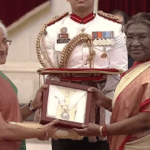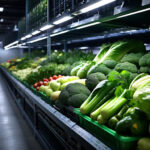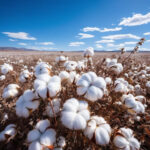Introduction to the India Chocolate Market
The chocolate market in India has experienced significant growth in recent years, with the market size reaching US$ 2.6 Billion in 2023. Looking ahead, IMARC Group projects a robust growth trajectory, estimating the market to reach US$ 5.3 Billion by 2032, reflecting a Compound Annual Growth Rate (CAGR) of 7.7% during the period 2024-2032. This growth can be attributed to various factors, including the proliferation of e-commerce platforms, the expanding range of domestic and international chocolate products, and the introduction of innovative flavors and packaging formats.
Understanding Chocolate Production and Types
Chocolate, derived from the Theobroma cacao tree, boasts a rich and indulgent flavor profile cherished worldwide. The process begins with harvesting cacao pods, followed by fermentation, drying, and roasting of cacao beans to produce cocoa nibs. These nibs are then ground to create chocolate liquor, serving as the foundation for all chocolate products. Broadly categorized into dark, milk, and white varieties, each type offers distinct characteristics. Dark chocolate, with its high cocoa content and minimal sugar, appeals to health-conscious consumers, while milk chocolate delivers a creamy sweetness, often associated with nostalgia and celebrations. White chocolate, devoid of cocoa solids, presents a luxurious sweetness derived from cocoa butter and milk components.
Impact of E-commerce and Digital Marketing
The advent of e-commerce platforms has revolutionized the retail landscape in India, significantly impacting the chocolate industry. Consumers now enjoy convenient access to a diverse array of chocolates from both local and international brands. Moreover, the integration of social media and digital marketing strategies has propelled market growth further. Chocolate manufacturers leverage these platforms to engage with consumers, promote products, and execute targeted advertising campaigns, effectively amplifying brand visibility and consumer engagement.
Factors Driving Market Growth

Img Src: Civil Society Magazine
Evolving Consumer Preferences and Health Awareness
Changing consumer preferences in India have spurred the demand for healthier chocolate alternatives, particularly dark chocolate. Recognized for its antioxidant properties and lower sugar content, dark chocolate aligns with the growing health consciousness among consumers. Manufacturers respond by incorporating natural, organic ingredients and functional additives, catering to the evolving preferences of health-conscious consumers.
Growing Gifting Culture and Festive Celebrations
Chocolates have emerged as popular gifts during various occasions and festivals in India, supported by attractive packaging and targeted marketing campaigns. The corporate gifting culture further bolsters market demand, with companies frequently choosing chocolates as tokens of appreciation for employees and clients. Festive-themed packaging and gift sets contribute to heightened consumer interest and market growth.
Segmentation of the India Chocolate Industry
Breakup by Type
Milk Chocolate Dominance
Milk chocolate maintains its dominance in the Indian market, characterized by its creamy texture and sweet taste. Strategic marketing initiatives, seasonal promotions, and nostalgic associations contribute to its sustained popularity among consumers.
Rising Demand for Dark Chocolate
Driven by health awareness and evolving tastes, dark chocolate is witnessing a surge in demand. Manufacturers capitalize on this trend by offering premium dark chocolate variants, emphasizing natural ingredients and health benefits.
Breakup by Product Form
Preference for Molded Chocolates
Molded chocolates capture a significant market share, appreciated for their visually appealing designs and creative shapes. Ideal for gifting and special occasions, molded chocolates continue to attract consumers with their novelty and charm.
Convenience of Countline Chocolates
Countline chocolates, packaged for on-the-go consumption, cater to the fast-paced lifestyles of urban consumers. Affordable and readily available, countline chocolates appeal to a broad consumer base seeking quick indulgence.
Breakup by Packaging Type
Convenience of Pouches and Bags
Pouches and bags offer convenience and portability, catering to consumer preferences for on-the-go snacking. Manufacturers prioritize eco-friendly packaging materials, aligning with increasing environmental consciousness among consumers.
Luxury Appeal of Boxed Chocolates
Boxed chocolates exude luxury and sophistication, making them popular choices for gifting and festive celebrations. Assorted flavors and elegant packaging contribute to their appeal, positioning them as premium indulgences.
Breakup by Distribution Channel
Retail Sales Reach Mass Audience
Retail outlets, including supermarkets and convenience stores, play a crucial role in reaching a wide consumer base. Impulse purchases and strategic displays drive retail sales, fostering innovation and market growth.
Institutional Sales Cater to Diverse Sectors
Institutional sales cater to hospitality, corporate gifting, and educational sectors, among others. Procurement for guest amenities, in-flight services, and corporate events contributes to institutional sales growth.
Regional Analysis of the India Chocolate Market
Dominance of North India
North India leads the market, driven by seasonal demand and the proliferation of modern retail channels. Cold winters and evolving consumer preferences contribute to sustained chocolate consumption in the region.
Unique Opportunities in West India
West India presents unique growth opportunities, characterized by cultural influences and rising disposable incomes. Premium and gourmet chocolates gain traction as consumers seek diverse flavor experiences.
Competitive Landscape and Future Outlook
Key players in the market prioritize innovation, introducing new flavors, packaging designs, and product formats. Marketing efforts focus on brand visibility and consumer engagement, leveraging social media and celebrity endorsements. Additionally, eco-friendly practices and healthier product formulations align with evolving consumer preferences, shaping the future trajectory of the India chocolate industry.
Conclusion
The India chocolate market presents a dynamic landscape characterized by evolving consumer preferences, innovative product offerings, and strategic marketing initiatives. With the rise of e-commerce platforms, growing health awareness, and cultural significance of chocolate gifting, the market is poised for sustained growth in the coming years.
FAQs:
- Is dark chocolate healthier than milk chocolate?
- Dark chocolate, with its higher cocoa content and lower sugar content, offers potential health benefits such as antioxidants, making it a popular choice among health-conscious consumers.
- What drives the demand for boxed chocolates?
- Boxed chocolates appeal to consumers seeking luxury and sophistication, often chosen for gifting and festive celebrations due to their assorted flavors and elegant packaging.
- How are chocolate manufacturers responding to health trends?
- Manufacturers are incorporating natural, organic ingredients and reducing sugar content to meet the growing demand for healthier chocolate alternatives.
- What role do e-commerce platforms play in the chocolate market?
- E-commerce platforms provide convenient access to a wide range of chocolates, enabling consumers to explore diverse options from both local and international brands.
- Which region dominates the India chocolate market?
- North India leads the market, driven by seasonal demand, modern retail channels, and cultural preferences for chocolate consumption.










